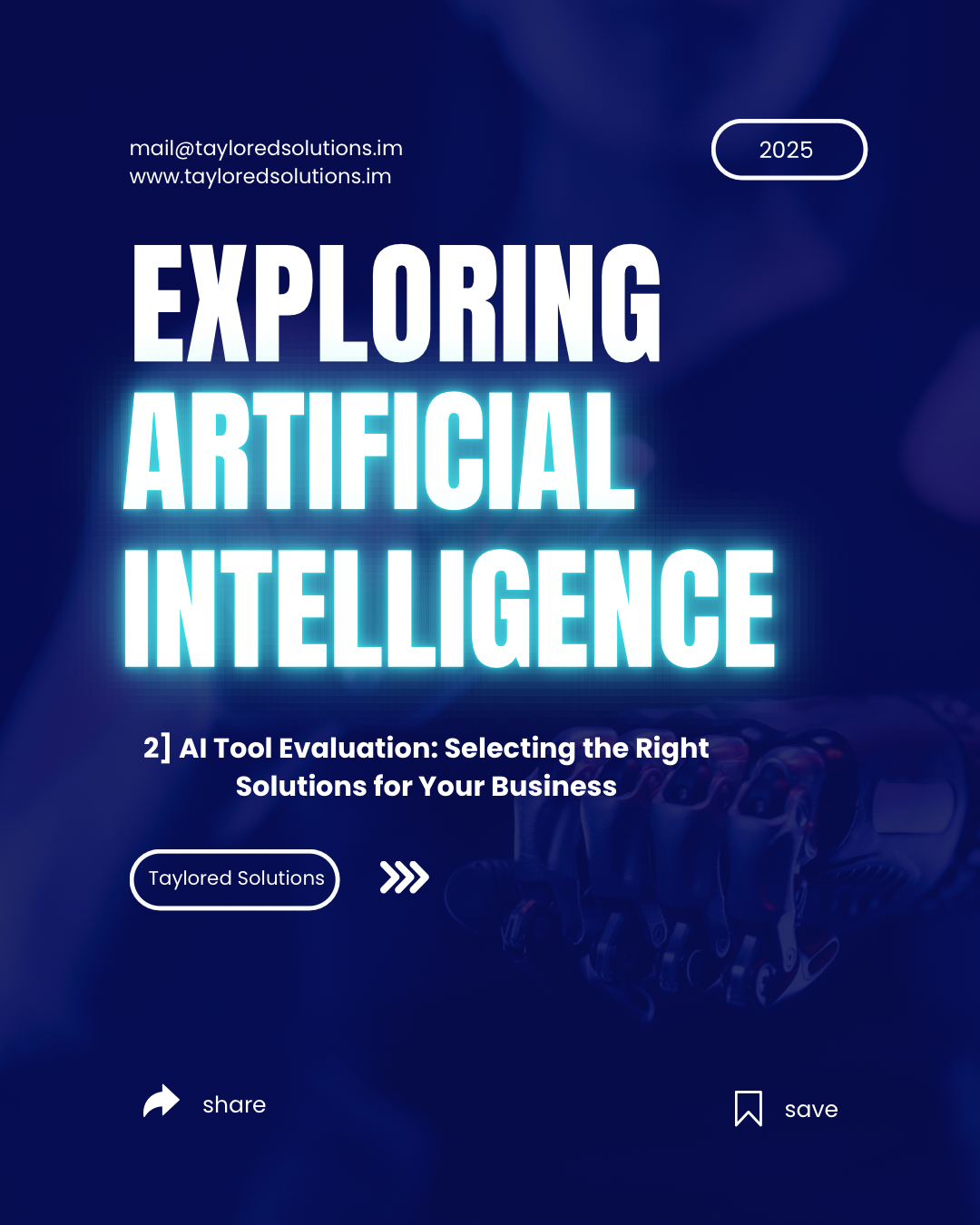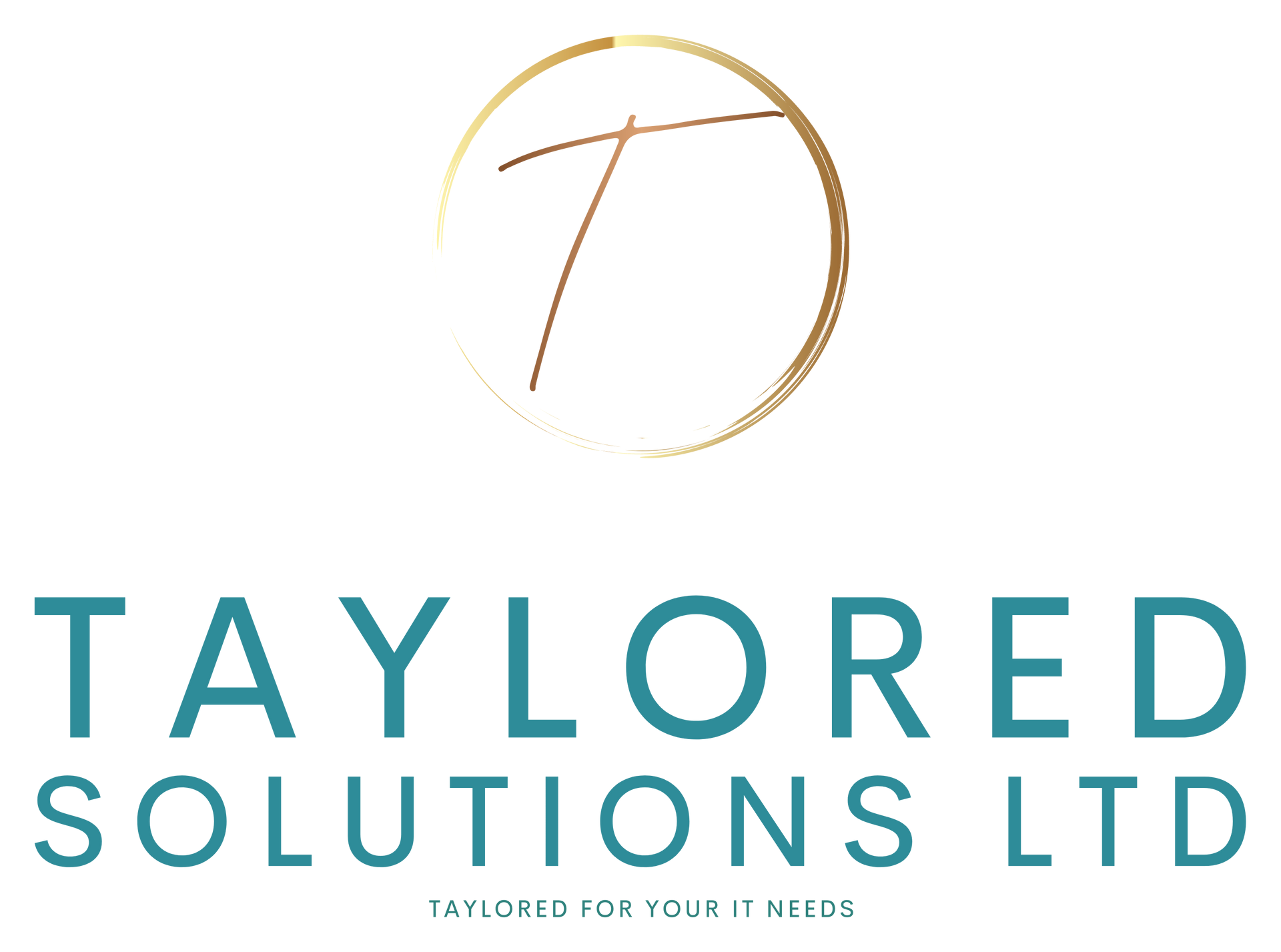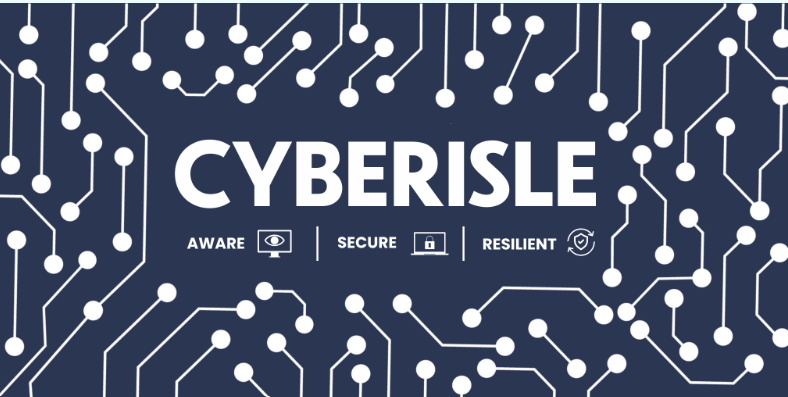Exploring Artificial Intelligence [2]
2] Understanding the AI Landscape Before Adoption

In our last post, we explored the security factors businesses must consider when adopting AI solutions. Now, let’s focus on another critical aspect, selecting the right AI tool for your specific needs.
With a market flooded with AI solutions, a structured evaluation process is essential to avoid costly mistakes. According to Gartner, 73% of organisations struggle to derive value from AI investments due to poor tool selection. Choosing the most advanced tool isn’t enough—it must align with your business goals, integrate with existing systems, and scale effectively.
Key Criteria for AI Tool Evaluation
1. Align AI with Business Needs
Before considering AI features, define the specific problems you need to solve:
- What manual processes take up significant time? Freeing employees for strategic work can be more beneficial than automating for the sake of it.
- Which areas would benefit from data-driven insights? AI should enhance decision-making, not add complexity.
- Are you improving existing workflows or creating new capabilities? A CRM with AI-driven customer insights might be more impactful than an advanced chatbot with limited application.
Example: A marketing agency might be tempted by AI-powered predictive analytics but find that a simpler automation tool better suits their immediate workflow.
2. Integration & Compatibility
An AI tool must work within your existing tech stack:
- Does it integrate with current software? Lack of integration is a major cause of AI failure.
- Are APIs available for custom connections?
- What technical expertise is required for setup?
- Are there case studies showing successful integrations with systems like yours?
📊 Fact: A recent IBM study found that 68% of failed AI implementations were due to poor integration with existing infrastructure.
3. Scalability & Future Growth
AI should adapt as your business evolves:
- How does it handle increasing data volumes?
- Can features be expanded easily?
- Are there hidden costs in scaling?
🚀 Companies prioritising scalability are 2.5x more likely to successfully expand AI across multiple departments (McKinsey & Co.).
4. Compliance & Data Security
Regulatory compliance is non-negotiable:
- Does the tool comply with Local regulatory requirements?
- What security certifications does it hold? (E.g., ISO 27001)
- Where is data stored? Does it meet sovereignty requirements?
- Can security settings be customised for jurisdiction-specific compliance?
📌 IOM Consideration: The Isle of Man’s Data Protection Act 2018 aligns with UK GDPR but has specific provisions for IOM businesses. Ensure vendors understand IOM’s regulatory framework.
5. Usability & Adoption
AI tools are only effective if employees actually use them:
- How intuitive is the interface?
- What training and support are provided?
- Can the tool adapt to workflows rather than forcing change?
🔍 Fact: Companies with strong end-user involvement in AI selection report 62% higher adoption rates (Forrester Research).
6. Vendor Stability & Local Support
- Do the vendor provide local support?
- Do they understand your business landscape?
- What’s their long-term product roadmap?
- Are they financially stable?
📌 The AI market is evolving rapidly. Choose a vendor with a proven track record to avoid investing in a tool that may be discontinued.
7. Total Cost of Ownership (TCO)
AI costs extend beyond the initial price tag:
- What implementation costs aren’t included?
- Are there hidden fees for integrations, advanced features, or additional users?
- Does licensing scale fairly as usage grows?
📊 On average, UK businesses report 35% in unexpected AI costs when they fail to assess TCO properly (TechUK Survey).
A Structured AI Selection Process
Step 1: Define Requirements
1.1 Identify key business challenges
1.2 Set clear success metrics
1.3 Document IOM & UK compliance needs
1.4 Establish budget constraints
Step 2: Market Research
2.1 Create a shortlist of AI solutions
2.2 Gather reviews from IOM & UK businesses
2.3 Identify top 5–7 candidates
Step 3: Detailed Assessment
3.1 Request demos & security documentation
3.2 Evaluate integration capabilities
3.3 Conduct compliance review
Step 4: Pilot Testing
4.1 Trial with real users
4.2 Measure adoption rates
4.3 Validate IOM & UK regulatory compliance
Step 5: Final Selection & Implementation
5.1 Negotiate terms & plan rollout
5.2 Develop training resources
5.3 Monitor AI performance post-implementation
Common Pitfalls to Avoid
- Feature Overload: Choosing AI based on hype rather than business need.
- Skipping Integration Checks: Not verifying compatibility before purchase.
- Poor Training & Change Management: Employees reject unfamiliar AI tools.
- Ignoring Local Regulations: Overlooking IOM’s specific compliance rules.
- Scalability Blind Spots: Picking a tool that can’t grow with your business.
Case Study: AI Selection Done Right
🏦 Isle of Man Financial Institution
Challenge: Enhance fraud detection while maintaining compliance with IOM & UK regulations.
Solution:
✅ AI-powered fraud detection system identifying complex fraud patterns.
✅ 30% reduction in false positives, improving efficiency.
✅ Real-time transaction monitoring for faster intervention and security.
📈 UK Marketing Agency
Challenge: Enhance customer service with AI but struggled with tool selection.
Solution:
✅ Prioritised CRM integration over unnecessary AI features.
✅ Conducted pilot testing with real customer interactions.
✅ Achieved 40% faster response times and improved satisfaction.
Next Steps: Preparing for AI Implementation
Selecting the right AI tool is just the first step. Employee training, workflow adaptation, and monitoring are key to maximising Return on Investment.
📢 In our next post, we’ll explore how to prepare your team for AI adoption and avoid common change management challenges.
💡 Need AI guidance? Taylored Solutions can help you business with AI evaluation & implementation for Isle of Man & UK businesses. Contact us for expert advice tailored to your needs.
Additional links for further reading
https://www.forbes.com/councils/forbestechcouncil/2024/05/06/finding-roai-strategic-benchmarking-for-ai-powered-business-success/?utm_source=chatgpt.com
https://research.aimultiple.com/ai-fail/?utm_source=chatgpt.com
https://technologymagazine.com/articles/gartner-why-cdaos-struggle-to-measure-ai-investment-impact
https://www.virtasant.com/ai-today/ai-readiness-assessment




